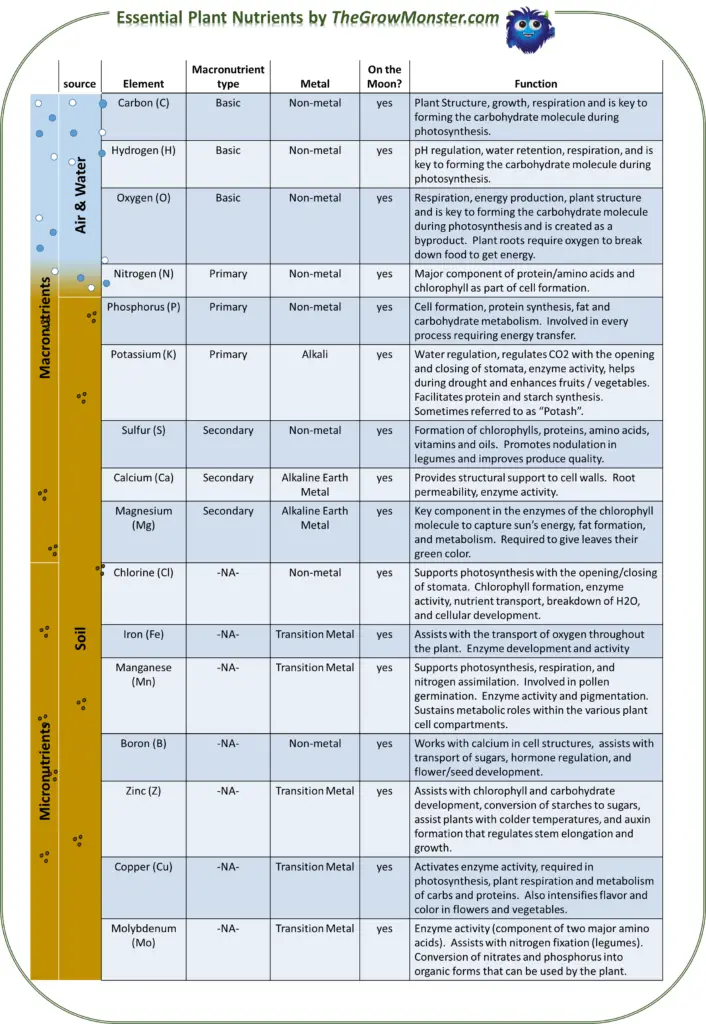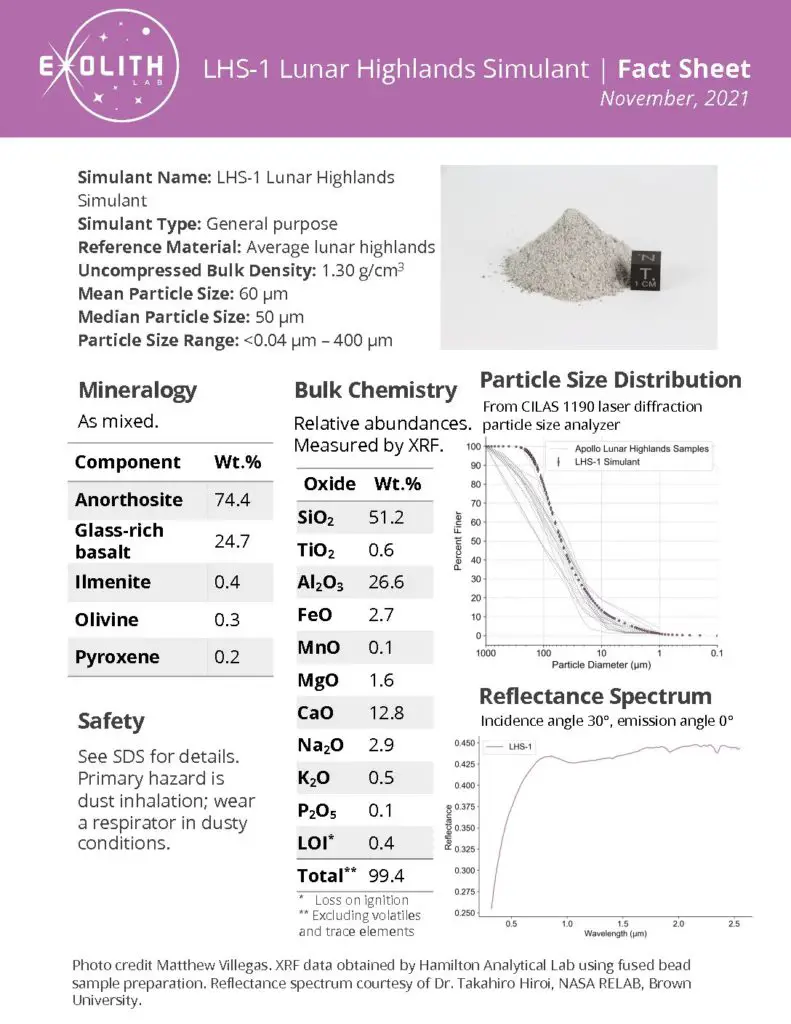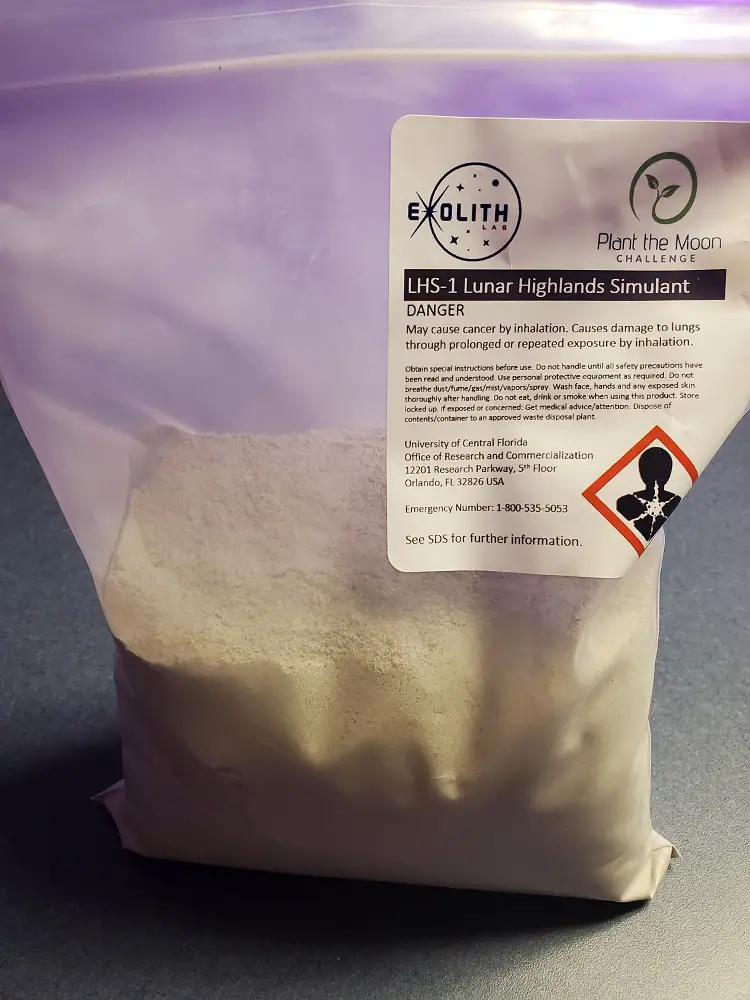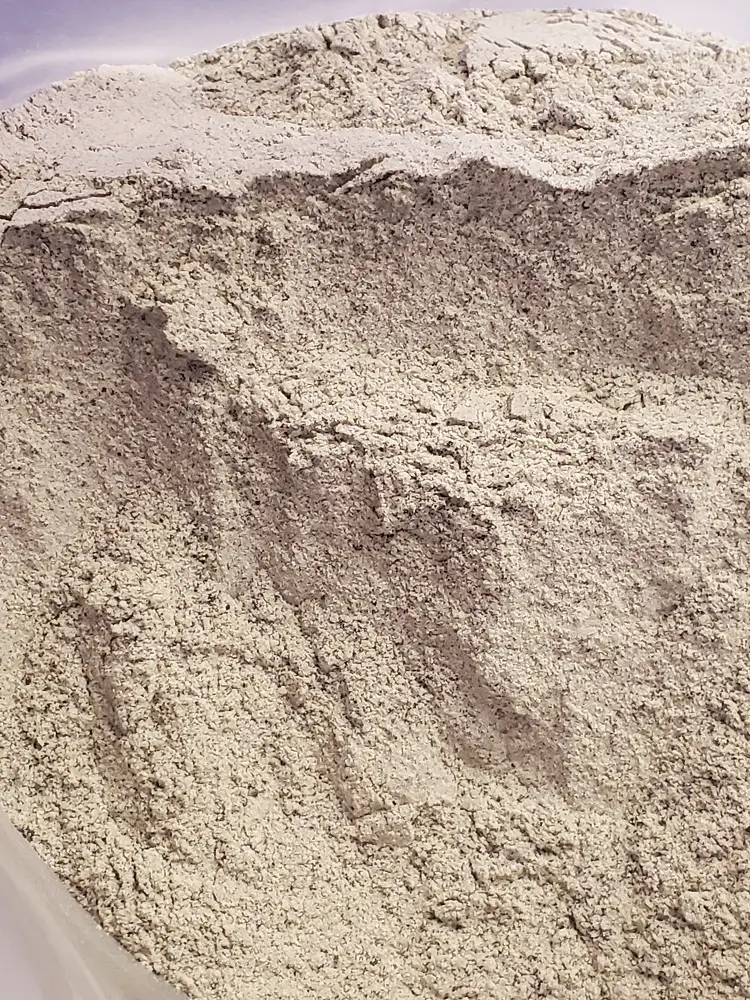Have you ever wondered what a suburban Lunar garden might look like, or if it is even possible? The Grow Monster has been thinking about gardening concepts lately that are absolutely out of this world. As part of the Plant the Moon and Plant Mars Challenge -which The Grow Monster has happily accepted- we are actively exploring this question along with the topic of Astrobotany in general.
Can plants grow on the Moon? Yes, plants can grow on the Moon but you need to ensure that the requirements for plant growth are being met. These requirements include having enough water, light, the correct pH, enough macro/micro nutrients, microbial life in the soil, and a controlled climate with maintained temperatures and pressures.
In this post, The Grow Monster will explore if plants can grow on the Moon by addressing the following:
- Why growing plants on the Moon is important.
- Requirements to Grow Plants on the Moon
- Synthetic Biology
- Experimenting with Regolith Simulants
- Conclusion
Can Plants Grow on the Moon? Why it is Important
It was made clear when the president signed the White House Space Policy Directive 1 on December 11, 2017 that human expansion across the solar system is our intention. This directive includes long-term efforts for returning humans back to the moon for the first time since 1972 and then building upon the experience for human exploration of Mars and beyond (if you also wonder if plants can grow on Mars, check out our previous post here). With NASA’s Artemis program, the focus will be on returning humans to the moon by 2025 and the necessity to grow sustainable crops in support of future colonization of the Moon.
With that being said, we’ll need to begin studying methods and processes for growing sustainable food sources in space and on celestial bodies such as the Moon, Mars, and beyond. There is a level of impracticality with the cost of continued resupply of food resources from Earth to other places such as the Moon or Mars. Cargo space on space craft is preciously limited and would be better served with specialized instruments and equipment rather than food. Therefore it is important to begin pursuing self-sustainable agriculture for self-sufficiency and human colonization of the Moon.
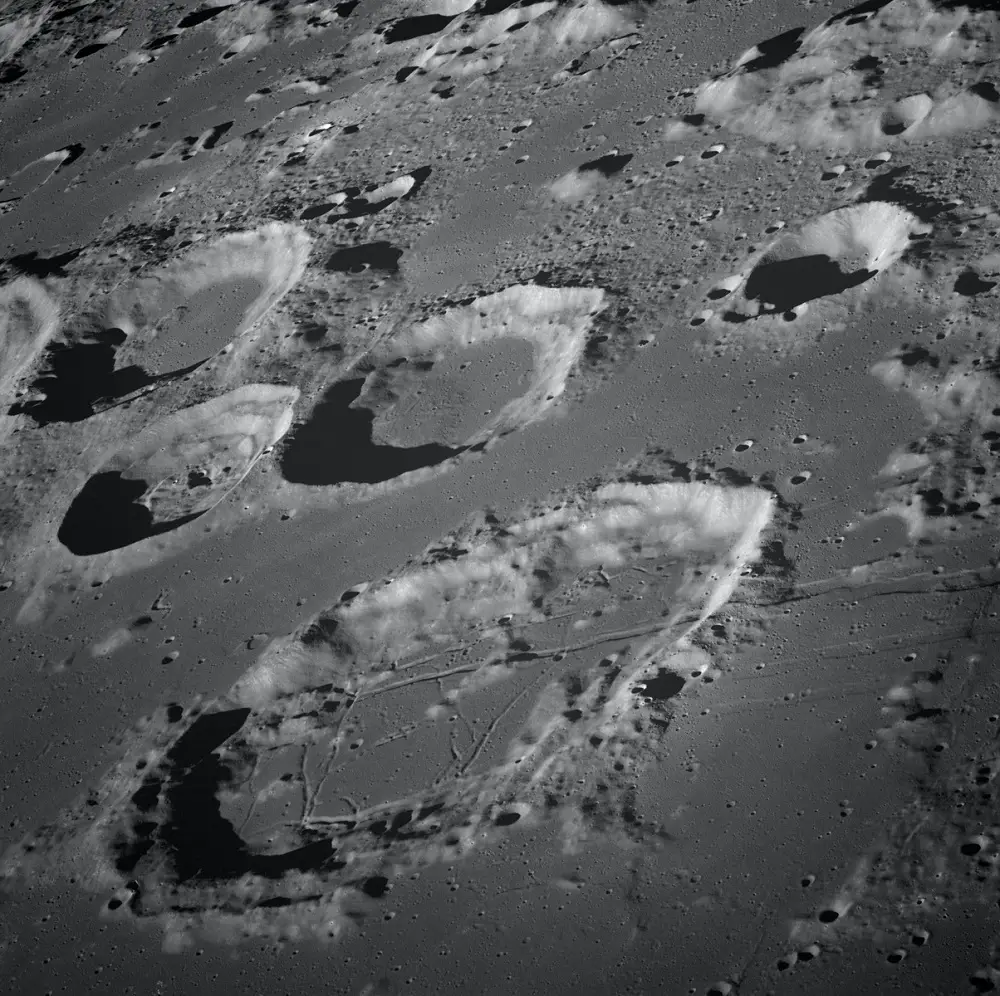
Requirements to Grow Plants on the Moon
There are a number of requirements to consider in order for plants to grow on the Moon. Those include water, light, pH, nutritional, and climate requirements.
Water Requirements– From our experience here on Earth, we know plants require water. The discovery of water on the Moon takes us one small step closer to the possibility of pursuing self-sustainable agriculture to support life and human colonization. We know there is water in the crater regions on the lunar poles where there are permanent shadows. It is in these shadowed areas where it is so cold that water is not able to evaporate and remains ice.
More recent studies from NASA’s Lunar Atmosphere and Dust Environment Explorer (LADEE) suggest that there is also water trapped in the lunar regolith (soil) in the sunlit areas of the moon. It has been observed that the H2O and OH molecules reside in a hydrated layer of regolith about 3 inches (8 centimeters) below the surface. As NASA states in this press release, this layer of hydration is still considered pretty dry as there are only 200-500 parts per million which is .02 to .05 percent by weight. This means that the Moon is so dry (100 times drier than the Sahara), they believe one metric ton of regolith would need to be processed in order to collect 16 ounces of water. Talk about trying to squeeze water from a rock!
Though in a separate NASA press release, they stated that water may be in concentrations between 100-412 parts per million which they believe to be trapped in about one cubic meter of soil which equates to a 12-ounce bottle of water. It was discovered by the LADEE explorer that each time a meteorite (or micro meteorite) impacts the Moon’s surface, a bit of the hydrated regolith is ejected back into the thin lunar atmosphere called the ‘exosphere’. They also believe that two-thirds of the water vaper ejected into the exosphere gets lost to outer space, whereas one third returns back to the lunar surface.

Plants may require less water on the Moon than on Earth. This is because water will flow through Lunar regolith soil a bit differently than it does in Earth soil. Matter is six times lighter on the Moon than on Earth because the Moon has only about 17% of the gravity we experience here on earth. Therefore, Lunar soil can hold more water than on earth and will drain away more slowly.
The moon also has a low to no atmospheric pressure in what is called a ‘surface boundary exosphere’, therefore water will boil into a vapor almost instantly. Contrast that with Earth where water boils at 100 degrees Celsius (212 degrees Fahrenheit) with an average atmospheric pressure of 1013.25 millibars (14.7 pounds per square inch) at sea level.
Although they don’t know exactly how much water is available in those craters on the moon, it continues to amaze The Grow Monster what the media reports to be true versus what NASA and research organizations are actually finding. For example, an ABC news article entitled ‘Water on the Moon: a Billion Gallons‘ begins with saying there are 1 billion gallons of water on the moon. The article itself is referring to NASA’s press release entitled ‘LCROSS Impact Data Indicates Water on Moon‘. NASA describes the lunar impact probe and what was reported as a result. The only reference to a ‘billion’ of anything was the number of years that the material on the moon may have been preserved. Either NASA had made the claim back in 2009 / 2010 time frame and redacted it later from the press release based on more results, or the media is stumbling over themselves to proliferate non-factual information.
A separate article from sciencedebate.com during the same time also seems to be parroting what was in the ABC news article. Here we are today ten years later trying to research how much water is on the moon, and these are the reports that come up. Anyhow, we digress.
When we eventually colonize the Moon, this water will require collecting either by extracting the molecules out of the Lunar soil (regolith) and/or by visiting nearby craters at the poles and melting it. These efforts will be akin to panning for gold as water will be one of the most valuable and vital resources the Moon can offer if it is to be colonized.
Light Requirements– We also know from our experience here on Earth that plants need sun light. Plants have the unique ability of harvesting solar energy and converting that energy into sugars (carbohydrate energy source) that can be consumed by humans and other animals. Humans and animals do not have the ability to do this on their own, therefore this intrinsic relationship exists between plant and animal.
According to this NASA release on facts about the moon, it receives about 327.5 hours (13.65 Earth days) of sunlight and 327.5 hours (13.65 Earth days) of darkness. Basically one side of the moon is always facing the Earth, and the other side of the moon is always facing away from the Earth. Both the Earth and Moon are about 93 million miles away from the sun. Any plants grown on the Moon as a food source will need to be supplemented with additional light sources (e.g., LED grow lamps) during those 13.65 earth days where there is no light available in order to ensure productive growth.
pH Requirements – Until TheGrowMonster participated in the Plant the Moon/Mars Challenge, we didn’t really appreciate this thing called “pH” level. The pH is a measure of how acidic or how basic (alkaline) the water in the soil is. The pH level is measured in a range between 1.0 and 14.0. A soil pH level of 1.0 is very acidic, whereas a soil pH level of 14.0 is very basic (alkaline). For the more technical folks, it is a measure of how many relative amounts of free hydrogen and hydroxyl ions are in the water.
As most average gardeners, we may have heard of the “pH level” term used in regards to acid-loving plants such as blueberries, azaleas, or hydrangeas, but other than that we didn’t particularly care about a soil’s pH and have taken it pretty much for granted up until now. The issue with Lunar regolith is that the pH level is slightly higher (more alkaline) than we need it to be.
We have learned that plant nutrients naturally need to be dissolved in an acidic soil solution first before they can be used by plants. Because most minerals and nutrients are more soluble in acidic soils, they prefer slightly acidic soils below pH levels of 7.0. At the end of the day, Lunar soil will need to be amended / treated to increase the acidity of the soil between 5.5 and 7.0 for higher germination rates and for plants to access any available nutrients (natural or amended) in the Lunar soil.
Here on earth, we use commercial products containing sulfur or aluminum sulfate mixtures to reduce the pH levels of a soil. To reduce the pH levels more naturally, gardeners can use peat moss to make it more acidic for their azaleas, blue berries, and hydrangeas among other acid-loving plants.
Nutritional Requirements – Like humans, plants have nutritional requirements. There are a number of essential elements required for plant life. These elements are also found on the Moon, but their availability may vary and may require extra efforts to utilize them in order to promote plant life.
Take water for example, most water available on the moon will be in the form of ice in craters at the poles, and in small amounts within the regolith itself. It will need to be collected, melted and processed in a controlled climate environment in order for it to be utilized by plant life. Other elements required to sustain plant life may need to have additional processes (mechanical or chemical) applied in order to make them available as well.
We know that elements such as carbon and nitrogen are essential macronutrients important for plant growth, however they are available only in trace amounts on the moon and will require special processes and methods for collecting the little that exists there. Essential elements for plant life in general can be broken down into macronutrients and micronutrients. Macronutrients are elements that plants require in large amounts versus micronutrients which are those elements required in smaller amounts.
Macronutrients ((carbon, hydrogen, oxygen – from air/water), (nitrogen, phosphorus, and potassium from soil)) and micronutrients (from soil: calcium, magnesium, sulfur, iron, manganese, zinc, copper, boron, molybdenum, and chlorine). The chart below describes these elements and their function in more detail.
Microbe Requirements – We would be remiss if we didn’t mention the need to include microbes as a requirement for plant growth on the Moon. There are five different types of microbes in soil and they include bacteria, actinomycetes, fungi, protozoa and nematodes. These microbes along with some of the bigger organisms that live in the soil (e.g., worms, ants, beetles, etc) assist in decomposing organic matter in the soil and keeping the soil fertile and healthy.
Here on Earth, our soils are alive with microorganisms and thus evolved an intrinsic relationship between plants and the microorganisms that live in these soils. Actinomycetes, for example, can be either good or bad for the soil. Populated with good actinomycetes in the soil, they can act as a natural antibiotic for plants. Others like protozoa consume bacteria and have excretions that become beneficial nutrients for the plant. Without a living soil environment on the Moon, plants will have a more difficult time getting nutrients out of the soil. Scientists will be looking at the best ways to inoculate soils with beneficial microbes as they move forward with plans to colonize the Moon.
Climate Requirements – As it is now, the current climate on the Moon is not suitable to support plant or human life. Because the moon has very little atmosphere (an exosphere) / barometric pressures, it has a hard time retaining heat, insulating, and filtering out the ultraviolet (UV) and cosmic rays. Therefore, there is not much “weather” taking place on the moon. Though, temperatures on the Moon fluctuate between the extremes depending on where the sun is shining.
NASA has been collecting temperatures on the Moon’s surface since 2009 using The Diviner Lunar Radiometer instruments aboard the Lunar Reconnaissance Orbiter (LRO). According to this NASA release, the lunar equator can be boiling during the day at 250 degrees Fahrenheit (120 degrees Celsius / 400 K), but at night can drop down to being as cold as -208 degrees Fahrenheit (-130 degrees Celsius / 140K) – that is colder than both North/South poles on Earth.
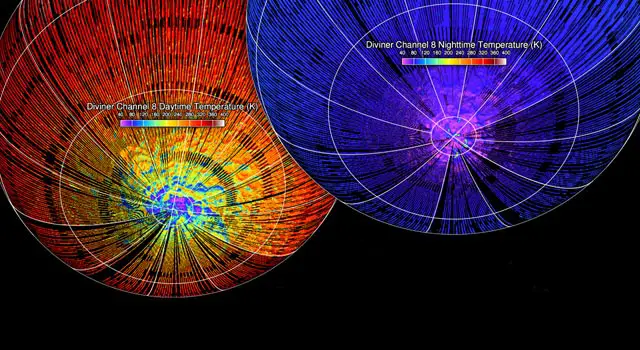
Keep in mind that a lunar day and a lunar night are approximately 327.5 hours (13.65 Earth days). That is plenty of time for things to either heat up, or cool down. And these temperatures apply at the equator. At the lunar poles where craters have perpetual shadows where sunlight does not reach, it can get much colder. For example, readings from the floor of the Moon’s Hermite Crater were determined to be one of the coldest measured in our solar system at -410 degrees Fahrenheit (-250 Celsius / 25K).
However, with all things considered, the Moon may be the closest celestial body in our solar system besides Earth to support life. Our own climate situation here on Earth is rather unique when it comes to supporting life. If you think about it, life on our planet is existing within a relatively small window of temperatures/pressures as compared to the universe around us. And within that small window, life forms on our planet have been able to adapt when climates have pressed towards their extremes.
Humans wear coats and plants alter their metabolism, flowering, growth, and dormancy during periods of colder temperatures. So some adaptation on behalf of humans will be required to colonize the Moon. In order for plants to thrive on the Moon and for humans to colonize it, humans will need to modify the climate. What’s that? Climate change you say? Answer: Yes. We’ll need to start burning lots of fossil fuels and create tons of industry to raise the Lunar temperatures enough in order for the ice on the Lunar poles to melt and provide us water. Okay, just kidding.
Because they have yet to find any evidence of life on the Moon (via fossils or otherwise), there are no fossil fuels to burn there. Our adaptation to the Moon will require us to have installed a number of contained greenhouse structures aka ‘biospheres’ aka ‘ecospheres’ where climate temperatures and pressures can be regulated, support water in a liquid state as well as within range of supporting plant, animal, and human life.
Synthetic Biology
There is a growing field (pardon the pun) called synthetic biology that looks at adapting and modifying plant biology to the conditions on places such as the Moon, Mars and beyond. Synthetic biology – engineering of organisms that combines a number of science disciplines from genetic engineering to computer sciences in an effort to enhance them with new and improved functions that might allow them to survive harsher environments.
With our understanding of DNA, we can now reengineer, design, build, and test entirely new organisms. These new organisms will be created and tested in what will be called biofoundries where millions of DNA design combinations can be tested to find the most favorable qualities in the design. In regards to the Moon, biofoundaries specific to the Moon will be used to design and build plants that can thrive in Lunar conditions, be resistant to harmful UV rays with improvements in their abilities of photosynthesis, photoprotection, drought tolerance, and cold tolerance.
Plants will not be the only thing to be designed and reengineered in biofoundaries. Microbes play an important symbiotic role with plants on Earth and are expected to play a similar role on the Moon. They will be redesigned, developed, and tested to amend and improve the soil quality on the Moon. A by-product of this field of research would be new and improved methods for designing / building food crops for people here on Earth. As the population increases, also increases the demand for the most efficient methods and processes in the production of food.
Experimenting with Lunar Regolith Simulants
Scientists are interested in what it would take to grow plants in Lunar surface soil or ‘regolith’. Because they do not have mass quantities of regolith samples recovered to grow plants in, they can only go on the data received from the Apollo and Lunar probes over the years to make educated guesses on the composition of what those regolith soils would be. From this data, they are able to make attempts to recreate or simulate Lunar regolith with elements found here on Earth. They call these ‘regolith simulants’. They look for elements in places such as Shawmere Ontario, or from the Stillwater complex in Montana that contain elements similar to regolith found on the Moon.
When TheGrowMonster registered for NASA’s Plant the Moon Challenge, we received a bag of Lunar regolith simulant produced by the Exolith lab. You can learn more about the Exolith Lab by clicking here. According to the lab, the Lunar regolith simulant provided was composed of the following elements:
While some individuals/schools are participating in the Plant the Moon/Mars Challenge, others are studying the growth of plants in various regolith simulants on their own. These teams of people are identifying a number of issues and work arounds to growing in the simulants including the use of augmented sunlight with multiwavelength LEDs, amending the claylike soil with things such as worm castings, shredded cardboard, and vermiculite to aid with aerating / drainage. Because soil dryness can be a big issue, some have determined that the humidity of a greenhouse on places such as the Moon or Mars would need to be between 50%-60% to retain the moisture.
Final Thoughts
The Grow Monster is going to conclude with: Yes, plants can grow on the Moon. However, plants will not be able to grow on their own there. Water sources will need to be harvested, melted, and processed. Essential elements such as carbon and nitrogen will need to be efficiently sourced and processed as well.
We will then need to provide a contained environment (e.g., green house) where the climate can provide the temperatures and pressures necessary to ensure water maintains a liquid form. Plants will also require a bit more light than what is already provided on the Moon and supplemented with LED grow lamps for optimal growth. The soils will also need to be amended to lower pH. We can then add microbes and organic matter to the soil to make it come alive with nutrients for the plants that will grow in it.

There will also be the advances in synthetic biology and biofoundries that may one-day enable plants and animals to live and adapt to some of the extreme environments offered by the Moon. In order for us to prepare for colonization on the Moon, we need to be able to grow sustainable food sources on the the Moon itself. Using precious cargo holds on a space ship to move food items back and forth is not an efficient use of the (pardon the pun) space.
Therefore, we challenge ourselves with events like Plant the Moon/Mars Challenge to find ways and methods to make the dream of colonizing the Moon a reality. Can plants grow on the Moon? Yes, and if we devise experiments working towards that end, we can make it happen.


